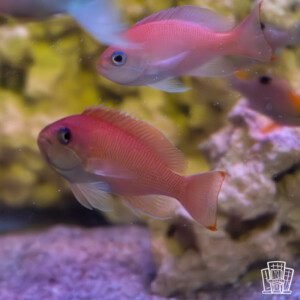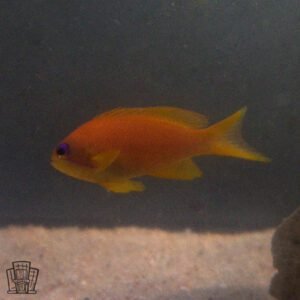Description
- Scientific Name: Signigobius biocellatus
- Common Names: Twinspot Goby, Signal Goby, Four-eye Goby, Two spot Goby
- Maximum Length: 4 inches (10 cm)
- Minimum Aquarium Size: 30 gallons (113 liters) for a pair; larger tanks (50 gallons or more) recommended for stability and space.
- Foods and Feeding Habits: Carnivorous, sifting sand for small invertebrates, copepods, and detritus in the wild. In aquariums, provide live or frozen copepods, brine shrimp, and mysis shrimp; may accept prepared foods once acclimated. Feed small amounts multiple times daily. A mature sand bed with microfauna is essential to prevent starvation.
- Reef Safety: Reef-safe; they don’t harm corals or invertebrates and thrive in reef setups with fine sand substrates.
- Temperament: Peaceful and shy; often kept in pairs. Compatible with non-aggressive tankmates, and they form symbiotic relationships with pistol shrimp.
- Description: The Two spot goby is a delicate sand-sifter known for its mimicry. Its slender white body is dotted with orange spots, featuring two prominent black ocelli (eye spots) on the dorsal fins that can be raised. Native to Indo-Pacific lagoons and coastal bays, from East Africa to Indonesia, they inhabit sandy silty bottoms near coral or rubble at 1-25 meters depth. Challenging for beginners due to feeding requirements, but their hovering and signaling add a unique charm to nano or specialized tanks.
Fun Facts:
- The dorsal fin spots mimic the eyes of a crab or larger fish when raised, deterring predators by creating the illusion of a bigger threat.
- They perform a distinctive “waving” display with their fins to signal pistol shrimp partners, coordinating burrow maintenance and defense.
- In the wild, juveniles drift as plankton in shallow coastal waters before settling, but in captivity, their picky eating often leads to starvation if microfauna isn’t abundant.





